At the Heart of Town
/WHAT IS THERE ABOUT THOSE ROADS that meander through the countryside in and out of small town after small town? I don’t know that my aversion to interstate highway travel is all poetic and Robert Frost-y in the sense of choosing a less-traveled road, if that’s even what the poem is about. But, I do like those roads.
Recently, My Amazing-Missus and I towed our little shiny Airstream through the “hill country” of Texas. Our first stop was in Waco, where we paid homage to the high priest and prietess of house re-doing. It’s a bit astonishing to see people come by the hundreds from hundreds of miles away to see the wonder that is Chip & Joanna. They do seem to bring a sort of beauty to the world; in more ways than just fixing-upping.
I remember hearing a speaker at a banking convention proclaim that when a small town loses its local bank, it is on its way to ghost town status. I remain skeptical of that opinion, but it did start me to thinking: what is vital to the beating heart of a town or village?
We drove through one wide-spot in the road whose better days were behind it. On a large piece of land in the heart of the little town, where its school once stood, was a marker, reminding the few people left in the town that there was once a school with teachers and kids and sounds and smells and energy.
Maybe they were the Eagles, or Bulldogs, or Terrapins. Their “colors” might have been green & white, or blue & gold, but probably they were red & white.
So, what is it that makes the difference between a community having a pulse and being a ghost town?
Bank?
School?
Church?
Post Office?
Bar?
Barber shop / Beauty Parlor?
Or, one of those places when you can get gas, bread, milk, beer, and lunch from a greasy, steamy glass case filled with fried stuff like okra, gizzards, potato wedges, and such; plus a 32 oz. plastic vessel of some soft drink to wash it all down?
As our trip through rural America continued, I may have discovered what it is that most every small town seemed to have. It was easy to spot them. Many are brightly painted and gaudily adorned. The local flower shop. Think about it. If the town still has one of these, not only do you have a vibrant business still left on main street, but you’re also likely to have its effervescent and flamboyant proprieter. You also have a place to buy a balloon for a birthday, a gift for graduation, Father’s Day, and a baby shower. After all what is a community if not a place to celebrate and make memories together.
I haven’t forgotten the obvious: the flowers. How could we be a community without flowers? There will be Mother’s Days and Valentines Days. Oh, and the weddings.
And while there may not be ballgames, and school dances on the town calendar anymore, there will undoubtedly be the next funeral. You need community to bring flowers and a covered dish to the house to remind you that in the midst of deepest grief, there is a tomorrow and your community is with you.
While I’m on the subject of the essential role of beauty in the midst of despair, let me beg you to contact your congresspersons and implore them to not buy in to the ill-informed, misguided, ill-conceived, near-sighted and selfish scheme to strip funding for the National Endowment for The Arts and the National Endowment for The Humanities. It would be like burning down the flower shop of a small town, or telling Chip and Joanna they can’t fix-up anymore ugly houses, turning them into someone’s dream home.
If you don’t believe the arts are critical to our national well-being, go see this exhibit at the Oklahoma City Museum of Art. You only have until July 2, 2017. If you want to go with someone, call me. I’ll join you and even buy your ticket.
Here’s another idea. Click here and Watch this. https://vimeo.com/194276412









